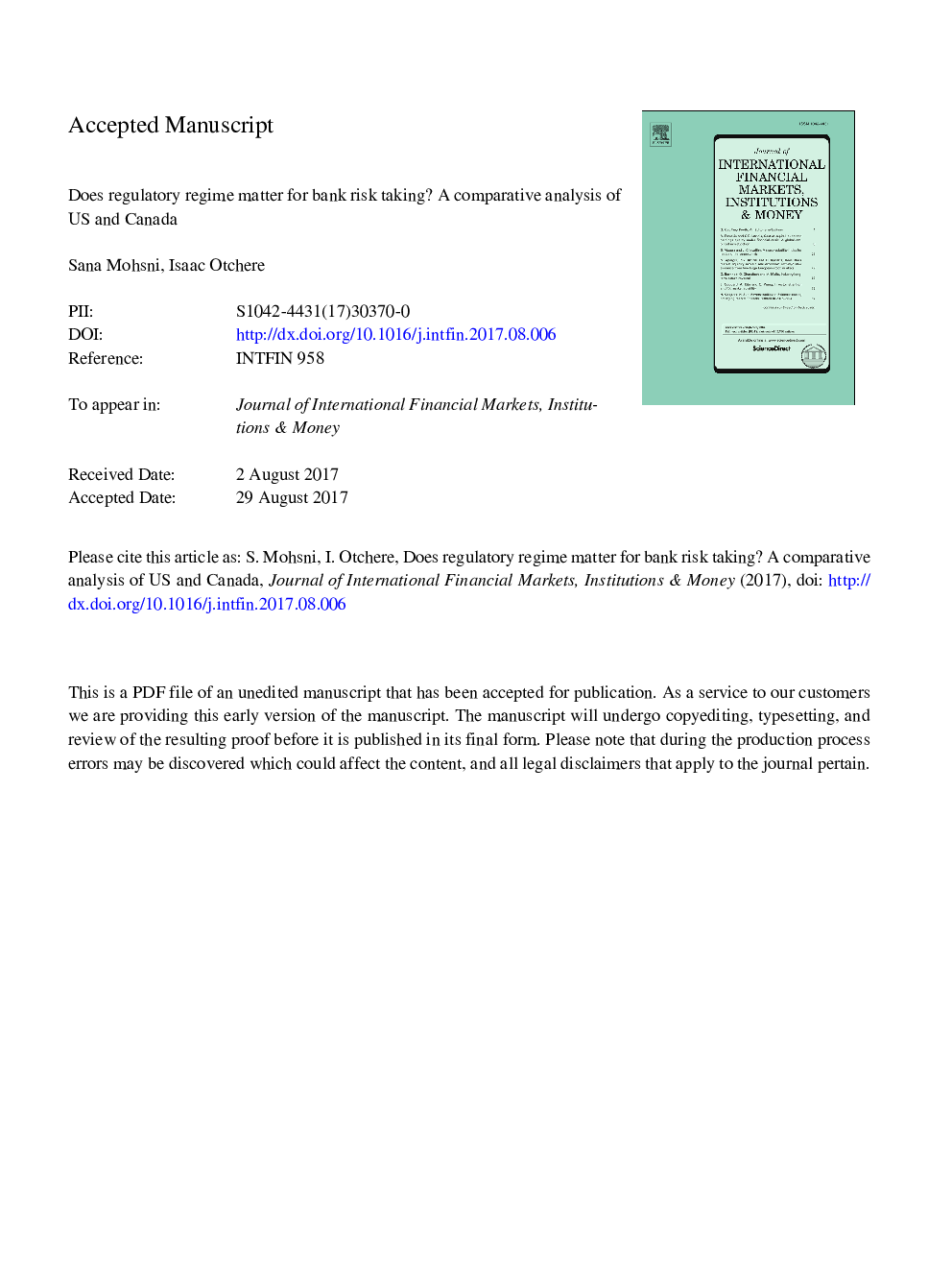| Article ID | Journal | Published Year | Pages | File Type |
|---|---|---|---|---|
| 7364249 | Journal of International Financial Markets, Institutions and Money | 2018 | 43 Pages |
Abstract
In the wake of the worst financial crisis in 2008, most US banks were bailed out while Canadian banks sailed through the crisis relatively unscathed. This has compelled some analysts to question why banking crises happen in America but not in Canada. We examine the risk-taking behavior of banks in the US and Canada prior to the recent financial crisis and find that Canadian banks had lower risk than their US counterparts over the study period. Further analysis shows that entry restrictions, which create concentrated banking structure, strong supervisory power, and discipline constrain excessive risk taking by Canadian banks. Entry restrictions enable Canadian banks to generate higher profits and lower variability of asset returns, while restrictions on activities reduce profitability and increase variability in asset return. However, the former seems to overwhelm the effect of asset restrictions, given the lower risk that we observe for the Canadian banks. The less concentrated but competitive banking structure in the US is associated with higher bank risk taking.
Keywords
Related Topics
Social Sciences and Humanities
Economics, Econometrics and Finance
Economics and Econometrics
Authors
Sana Mohsni, Isaac Otchere,
